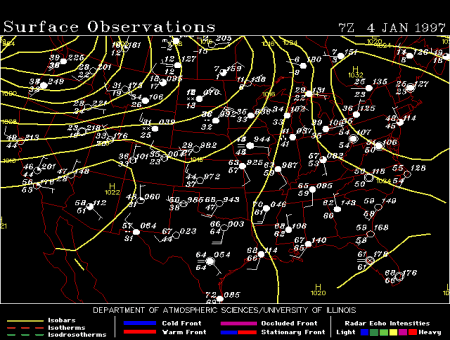
|
Warm and cold advection influence vertical air motion. Warm advection results in rising motion which leads to falling pressures at the surface, while cold advection leads to sinking motion, causing pressures to rise at the surface. The sequence of surface maps below show the surface pressure fields (isobars) that resulted from the warm and cold advection patterns at 850 mb.

The top map shows an area of low pressure over the northwestern United States and an area of high pressure over the eastern U.S.
|
